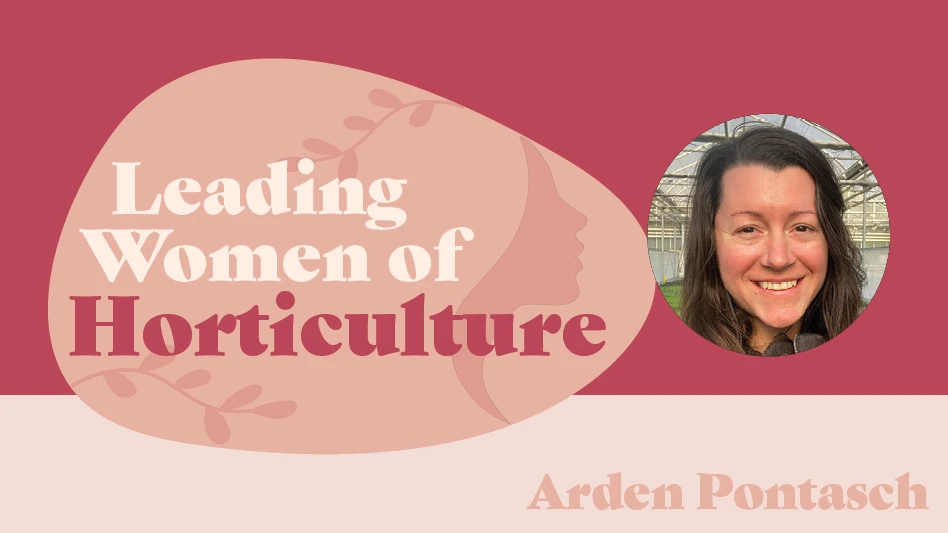

You’ve discovered a plant with a wow factor. It’s got your botanical bells ringing just thinking about how popular it may be. So now what? There are ways of protecting your discovery before it’s released in the marketplace, including patents and trademarks, but there is some serious preparation and tedious steps involved before the sales dollars start rolling in.
Plant patent primer
That dandy plant you found — whether it was through concentrated breeding efforts or by a fluke — must meet certain requirements before it can be patented.
If you’re considering a patent, you have the option to contract with a patent attorney, a patent agent, or you can do it yourself. Take heed, this is a complicated process and even the U.S. Patent and Trademark Office (USPTO) suggests several times on its website to consult a professional. If you choose to tackle this elaborate process on our own (known as pro se), the USPTO offers some assistance here: uspto.gov/patents-getting-started/using-legal-services/pro-se-assistance-program.
Once you’ve partnered with a pro or decided to go solo, the next question is, “Has this plant already been patented?” A thorough search must be performed to dig up this information. Rejoice — no one else has patented your discovery. The next question to ask: “Is my plant even eligible for a patent?”
Besides adhering to the general requirements of patentability, your plant must also meet these conditions, according to the USPTO:
- Have been invented or discovered in a cultivated state, and asexually reproduced.
- That the plant is not a plant which is excluded by statute, where the part of the plant used for asexual reproduction is not a tuber food part, as with potato or Jerusalem artichoke.
- The inventor named for a plant patent application must be the person who actually invented the claimed plant, i.e., discovered or developed and identified or isolated, and asexually reproduced the plant.
- The plant has not been patented, in public use, on sale, or otherwise available to the public prior to the effective filing date of the patent application with certain exceptions.
- The plant has not been described in a U.S. patent or published patent application with certain exceptions.
- The plant be shown to differ from known, related plants by at least one distinguishing characteristic, which is more than a difference caused by growing conditions or fertility levels, etc.
- The invention would not have been obvious to one having ordinary skill in the art as of the effective filing date of the claimed plant invention.
While every condition must be met before a plant patent is granted, there is one rule that is sometimes broken in the nursery and greenhouse industry because growers love to share information with colleagues. The USPTO will determine if there’s been any public disclosure of the plant. In other words, has your plant been offered in a catalog, featured on a web site or posted on a social media channel? If so, you will not receive a patent for it.
“Don’t show the plant you wanted patented to anybody,” warns says Sam McCoy, a registered patent agent at Perennial Patent Co. in Mt. Pleasant, S.C. “Don’t take it to a trade show, don’t take a photo of it and put it on social media, don’t let others take a photo of it. The patent office will go on the internet and look for it, they’ll look through patent databases and they’ll look for it in the public domain, such as a Google search.”
Previously, the patent office looked at public disclosure only in the U.S., but now they look at disclosure globally, he explains.
The disclosure refers to anything prior to applying for the patent. Once your patent application is turned in, you are allowed to discuss, market or sell that plant. Some breeders, growers and brand owners will refer to a plant as PPAF (plant patent applied for) after the application is complete. But there is an inherent risk in this action, McCoy says.
“If, for some reason there is a subsequent patent infringement case regarding the plant you marketed or sold as PPAF, and you are awarded damages, you’ll only receive damages beginning from the application publication date, which occurs 18 months from the filing of the patent,” he explains. “In other words, if your plants were sold illegally during that 18 months, you’re not going to get paid for those sales based on case law.”

Patent protections
The grant of a plant patent by the USPTO precludes others from asexually reproducing, selling, offering for sale or using the patented plant or any of its parts in the United States or importing them into the United States.
A plant patent is regarded as limited to one plant, or genome.
“When you patent a plant, you are literally patenting that one plant. Any clone off of it is still considered that ‘one plant,’” McCoy adds.
A plant derived from a sport or a mutant is unlikely of the same genotype as the original plant, and thus would not be covered by the plant patent to the original plant. Such plant derived from a sport or such mutant may itself be protected under a separate plant patent, subject to meeting the requirements of patentability.
A plant patent expires 20 years from the filing date of the patent application. As with utility patents, when the plant patent expires, the subject matter of the patent is in the public domain.
Since the patent has a shelf life of 20 years, growers can continue to protect that plant with a trademark. The marketing name you’ve assigned to the plant has no bearing on your trademark.
“Trademark can live on for perpetuity,” McCoy says. “Many companies’ licensing agreements read that even in the absence of a patent, royalties will continue to be paid. This allows you to covet that plant you bred vis a vis the trademark.”
For basic information on trademarks, visit uspto.gov/trademarks-getting-started/trademark-basics.

Trademarks are critical to the marketing success of the plant. A plant patent is not the formula for success.
“I’m also a licensing agent, so I caution clients that this is not a ‘build it and they will come’ situation,” McCoy says. “You need to have some sense of how you’re going to commercialize that plant, bring it to market and support it out in the market. That’s a huge consideration. What is your distribution model?”
Nursery folks and backyard breeders need to think bigger than just selling it to their own customers. They need to look at the bigger picture, he adds.
“You have to consider things like if you are going to direct license it to a company; what are the terms of the agreement; will you license it to a branded program; or work with an independent license agent,” he explains. “If you don’t have an idea about distribution and marketing, or aren’t willing to go through that exercise, don’t bother with the patent.”
Illegal propagation and trademark infringement is a problem in the ornamental industry, although there’s no hard data regarding how widespread it is. There are companies that specialize in intellectual property services, such as Royalty Administration International (RAI) and MarkWatch, which monitor activities throughout the industry looking for patent and/or trademark infringements. Many patent agents also practice patent prosecution.
The bottom line: illegal propagation and trademark infringement hurts the entire industry, not just the affected company.
“Innovation is the lifeblood of any industry. Without innovation, you become stagnant. Illegal propagation and trademark infringement erode the bedrock of innovation,” McCoy says.
The green industry needs more collaboration and communication between colleagues and competitors when it comes to these illegal activities, he adds.
A group of growers, propagators and brand managers has started the collaboration process. J. Frank Schmidt & Son Co., Bailey Nurseries, Spring Meadow Nursery, Greenleaf Nursery Co., Chicagoland Grows, Jackson Nursery, Pleasant Run Nursery and Star Roses and Plants formed a stakeholder group to address the increase in illegal plant propagation. While the group has not yet created an action plan, they vowed to continue educating the industry and creating a united front to combat the problem.
Get curated news on YOUR industry.
Enter your email to receive our newsletters.
Explore the January 2020 Issue
Check out more from this issue and find your next story to read.
Latest from Nursery Management
- The Growth Industry Episode 3: Across the Pond with Neville Stein
- Trends: Proven Winners 2025 perennial survey shows strong demand
- Online registration opens for the 2025 Farwest Show
- Sustainabloom launches Wholesale Nickel Program to support floriculture sustainability
- Plant breeding as an art
- Society of American Florists accepting entries for 2025 Marketer of the Year Contest
- American Horticultural Society welcomes five new board members
- Get to know Christopher Brown Jr. of Lancaster Farms








